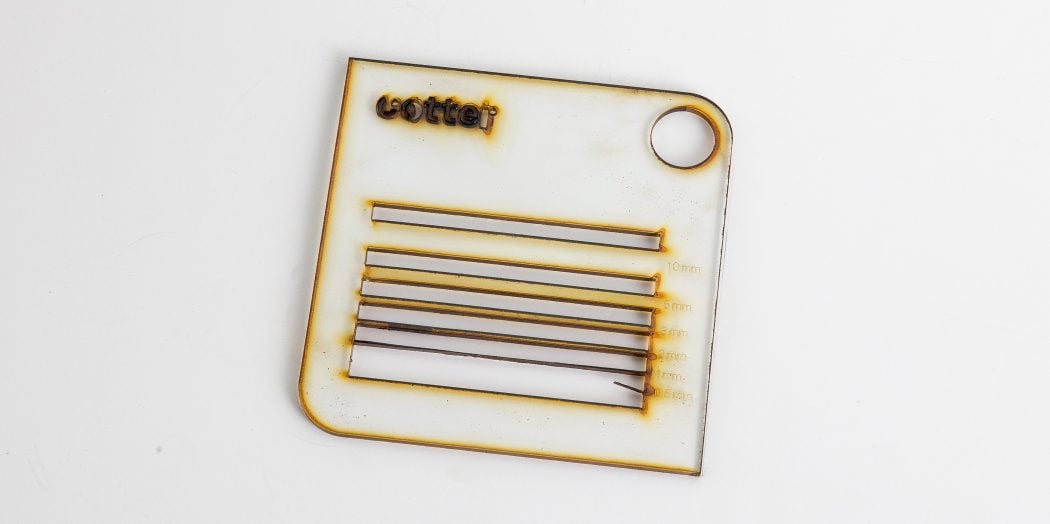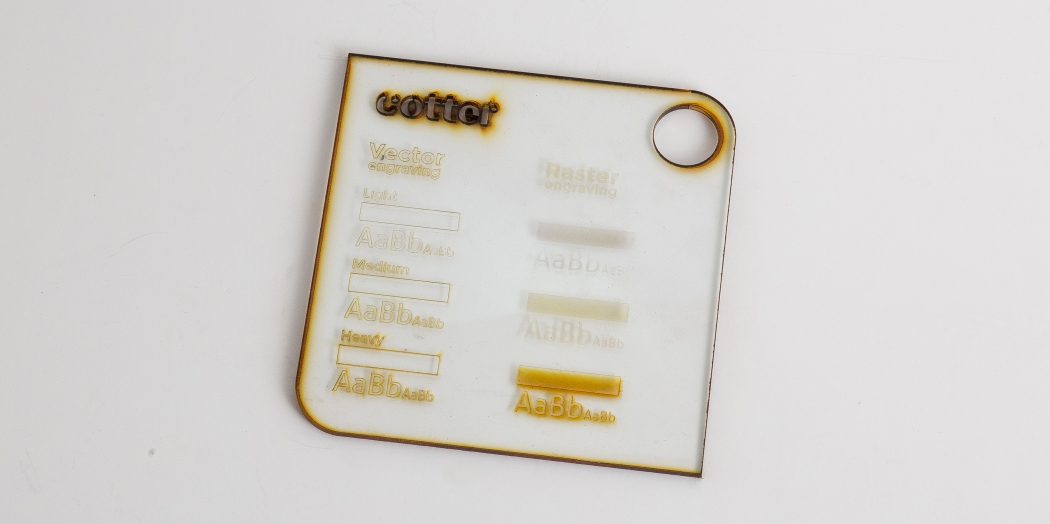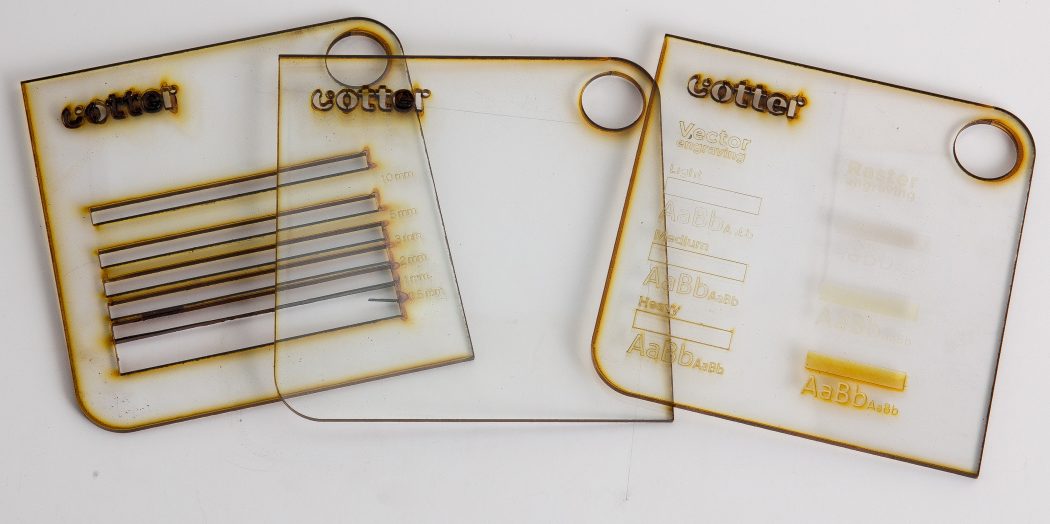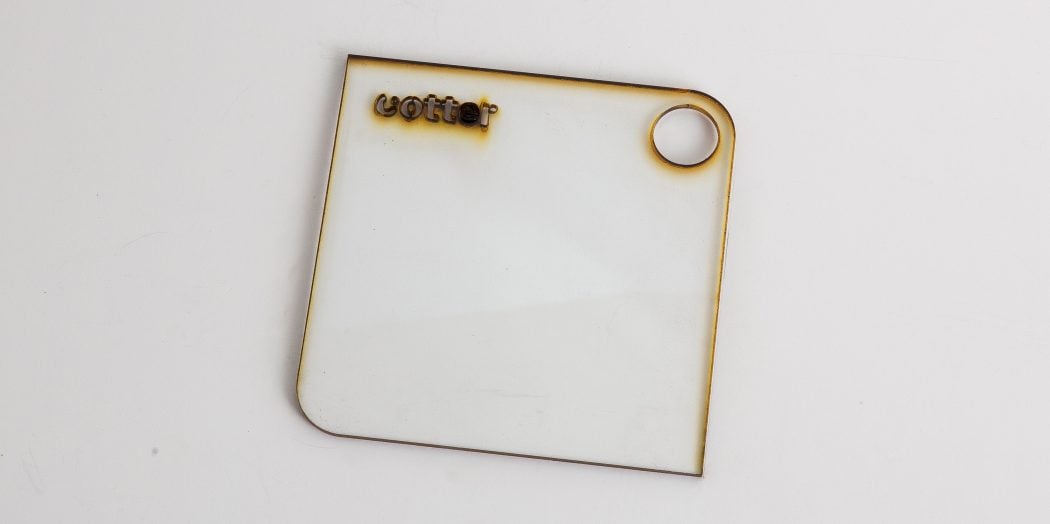Polycarbonate
Polycarbonate is an impact-resistant material and is particularly suitable for stencils and projects that require a robust material. However, polycarbonate is not suitable for projects that are part of a decorative context, since lots of colour is taken away by the laser cutting process.
Facts
Technical description: Polycarbonate
Weight: 1,2 g/cm3
Tolerance, thickness: +-5%
| Thickness | A4 | A2 | A1 |
|---|---|---|---|
| 1 mm | € 6 | € 8 | € 15 |
| 3 mm | € 6 | € 17 | € 30 |
All sizes are in cm. All prices are inclusive of 25% VAT.
| Thickness | 200×125 | 200×100 |
|---|---|---|
| 1 mm | € 53 | – |
| 3 mm | – | € 81 |
All sizes are in cm. All prices are inclusive of 25% VAT.
Useful to know
Polycarbonate is an impact resistant, clear plastic with a glossy surface. It is often used for windows, protective glass, signage etc. and is also good for stencils. If the stencil is used with a roller or sponge, 1mm polycarbonate is best to use.
Please note that the edges become yellowish/brownish after laser cutting and the actual material does not look so nice. Try wiping with a damp cloth to remove any traces of soot and lean it up against a clean surface before being used.
Vector and raster engraving
Polycarbonate can be both vector and raster engraved. However, it should not be used in a decorative context, as polycarbonate becomes yellowish/brownish after being engraved. Thick vector and raster engraving will cause some discoloration around the engraved area.
Raster engraving is not possible on sizes larger than A1.
Laser cutting
Top – As standard delivery, a film is applied to the top prior to cutting. This means the material will not have any visible signs of cutting.
Edges– The edges look yellow/dark and can rub off.
Bottom – As standard delivery, a film is applied to the bottom prior to cutting. Therefore, the bottom has no noticeable marks. Some smoke may get underneath the film, which can easily be removed with a cloth.





